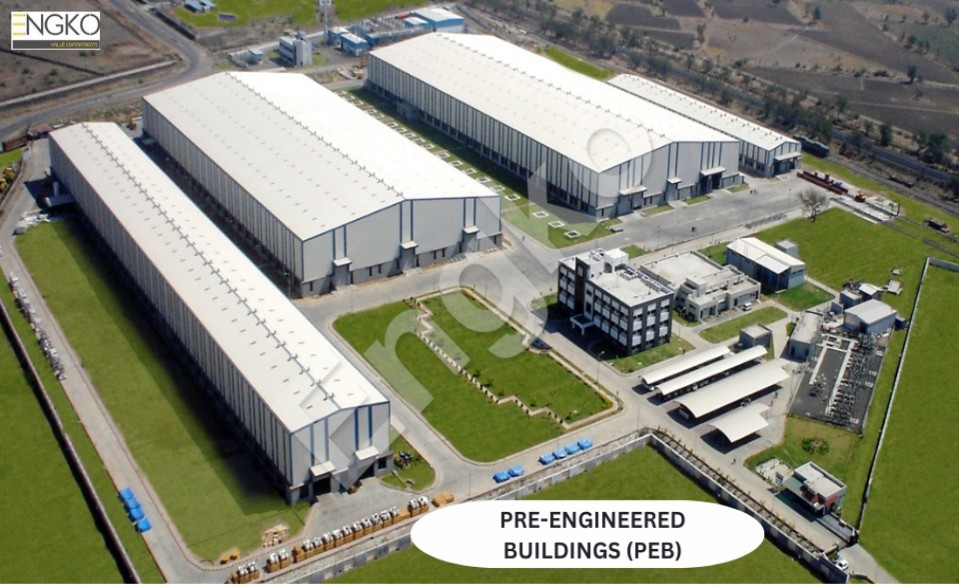Home > Blog detail

Jul 2024
In western countries, Pre-engineered building construction or prefabricated construction is very common but in the last few years, pre-engineered buildings (PEB) become popular in developing countries like India and Industrial sector is the early adopter of pre-engineered buildings. In modern India, almost 95% of Industrial sheds, warehouse buildings, factory buildings are constructed with pre-engineered technology. Factory owners and Landowners are getting enormous benefits using prefabricated technology. Important reasons why these prefabricated structures are best for industrial sheds, warehouse buildings and factory sheds are construction time, environment friendly, maintenance free.
With growing technology, societies have been reshaped throughout history. Technology has played a vital role in the way humans behave and operate in the world. Over the years, Technology used in building has also got changed. Prefabricated building is one of the biggest changes adopted by the construction industry. Almost 85% of the commercial buildings, industrial buildings, hospitals, schools are pre-engineered today in US. There is no doubt that pre-engineered buildings (PEB) are the utmost demand of construction technology in this modern era.
Pre-engineered buildings are different from onsite fabrications. Pre-engineered buildings are those which are built in factory in a controlled environment with modern machineries and then assembled at site as per the drawings provided by the structural engineers using high tensile nut bolts, fasteners that are specific to the structure. This way, one can complete building in a quick period and being cost-effective.
Pre-engineered buildings (PEB) are still new in India, but its use in government organizations and business is growing quickly. In past few years, Indian infrastructure is growing quickly whether it is commercial, industrial, institutional or health. Now a days buildings are constructed using pre-engineered technology are more beautiful and stronger, even though they are more complicated than the ones which we had few decades ago. PEB are designed in such a way that buildings are light in weight with no effect on strength on the other hand.
What does “pre-engineered” means? It means all building specifications as per the needs of the client shall be figured out before it built. Before manufacturing highly quailed structural engineers works on different elements or parameters like design loads, foundations, claddings options to provide optimal solution and cost-effective building to the client. This means that pre-engineered buildings (PEB) can be made in a way owner wants.
In India use of Pre-engineered buildings (PEB) in industrial and non-residential buildings are growing quickly. As per the reports pre-engineered buildings that can be made each year in India is around 10.00 lac tones. This is growing with a steady rate of 25-30 percent.
This all is happening because Pre-engineered buildings (PEB) having more advantages over traditional buildings. These PEBs are light in weight, cost effective and last for long time. Most importantly, PEBs are 30-60% faster than traditional buildings. This is the biggest reason people around the world start saying that pre-engineered buildings (PEB) are the future of modern infrastructure.
Engko Engineering is the fastest growing pre-engineered buildings manufacturers in India with over 13 years of experience. We provide complete turnkey solutions for PEB factory sheds, warehouse buildings, industrial sheds, aircraft hangers.
Q: What are the main components of a PEB?
A: The main components of a PEB include primary frames (columns and rafters), secondary members (purlins and girts), cladding (roof and wall panels), and accessories (doors, windows, ventilators, etc.).
Q: What materials are used in PEB construction?
A: PEBs typically use high-strength steel for the structural framework and metal sheets or insulated panels for cladding. Some PEBs also incorporate concrete or masonry for specific elements like foundations or partitions.
Q: How are PEBs different from conventional buildings?
A: PEBs are designed and fabricated off-site, which reduces construction time and labor costs. They offer greater flexibility in design, are more cost-effective, and can be easily expanded or modified.
Q: What are the advantages of using PEBs?
A: Advantages include faster construction time, cost savings, flexibility in design, lower maintenance, energy efficiency, and ease of expansion or relocation.
Q: How long does it take to construct a PEB?
A: Construction time can vary depending on the size and complexity of the building, but generally, PEBs can be completed in a matter of weeks to a few months, significantly faster than traditional construction methods.
Warehouse Manufacturers
Factory Building
PEB Stadium
PEB Terminal Buildings
Prefabricated Canteen
Call
: +91-9667986005